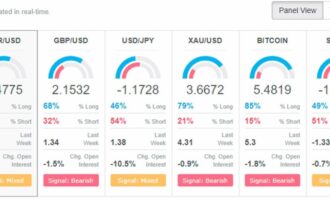In the next accounting cycle, the RE ending balance from the previous accounting period will now become the retained earnings beginning balance. Retained Earnings are reported on the balance sheet under the shareholder’s equity section at the end of each accounting period. To calculate RE, the beginning RE balance is added to the net income or reduced by a net loss and then dividend payouts are subtracted. A summary report called a statement of retained earnings is also maintained, outlining the changes in RE for a specific period. Retained earnings are a type of equity and are therefore reported in the shareholders’ equity section of the balance sheet. Although retained earnings are not themselves an asset, they can be used to purchase assets such as inventory, equipment, or other investments.
The retained earnings ending balance from the prior period will become the retained earnings beginning balance in subsequent periods. Retained earnings can be negative if a company has a net loss that exceeds the retained earnings of the previous accounting cycle. Of course, most growing companies will not pay dividends, and the vast majority of startups have negative income for long periods of time before generating a profit.
Conversely, negative retained earnings might indicate a company’s consistent losses or large dividend payouts. Observing the evolution of these earnings can reveal business profitability trends and the management’s dividend policies. Creditors will also consider retained earnings in the context of the company’s overall health. On the balance sheet, retained earnings are a type of equity reported as shareholders’ equity. Over time, your retained earnings can demonstrate whether certain investments paid off, which can be useful when planning new projects.
In the case of the toy manufacturer example, the profit would be $5 million minus the $3.7 million in costs and taxes. Strong financial and accounting acumen is required when assessing the financial potential of a company. This article is not intended to provide tax, legal, or investment advice, and BooksTime does not provide any services in these areas. This material has been prepared for informational purposes only, and should not be relied upon for tax, legal, or investment purposes. BooksTime is not responsible for your compliance or noncompliance with any laws or regulations.
- Companies retain earnings for working capital, to pay bills, maintain, upgrade or buy assets or to pay off debt.
- If, at the beginning of the year, retained earnings were present, then the resulting loss will reduce them.
- This tells shareholders whether the company’s retained earnings are generating a return.
- Dividends are payments made by a company to its shareholders from its profits or retained earnings.
Whether opening a new location, purchasing equipment or launching a marketing campaign, having retained earnings on hand can make these endeavors possible. For stakeholders, tracking the trajectory of retained earnings can provide a clear picture of the firm’s financial health and managerial prudence. In a business landscape where long-term sustainability is key, retained earnings stand as a testament to a company’s ability to balance immediate shareholder rewards with future ambitions. In short, retained earnings are the portion of net income that was not paid out as dividends but was retained by the company to reinvest in business development or pay off debt.
Such reinvestments can potentially enhance the company’s market share and profitability, leading to an increase in share value over time. Additional funds, and a way to earn sufficient profits to cover losses, is necessary to bring negative retained earnings back to a positive balance. However, this will take time, and puts a company at risk of losing investors. It should be noted that paying dividends using borrowed money when a company is experiencing a loss is unlikely to do any good and may even lead to bankruptcy.
Retained earnings are the portion of a company’s net income that management retains for internal operations instead of paying it to shareholders in the form of dividends. In short, retained earnings are the cumulative total of earnings that have yet to be paid to shareholders. These funds are also held in reserve to reinvest back into the company through purchases of fixed assets or to pay down debt. As we’ve discussed, startups are generally expected to accumulate a deficit, and even if a startup is able to generate net income, it’s unlikely to pay dividends. The focus is on scaling their businesses, so retained earnings aren’t a major priority. Put simply, negative retained earnings aren’t a major concern for new companies as they’re likely using that money for operating expenses and reinvestment into the business.
Dividends:
These earnings are tax-exempt unless they are distributed to shareholders, in that event, they become a taxed dividend. Retained earnings are kept in a separate equity account on the company balance sheet. By subtracting the cash and stock dividends from the net income, the formula calculates the profits a company has retained at the end of the period. If the result is positive, it means the company has added to its retained earnings balance, while a negative result indicates a reduction in retained earnings. Although retained earnings provide crucial insights into a company’s ability to generate profits and reinvest in its operations, they are not without limitations. High retained earnings could mean the company is consistently profitable, but it could also suggest the company isn’t reinvesting its profits effectively or isn’t returning enough profits to its shareholders.
Example Retained Earnings Calculations
Retained earnings on a balance sheet represent the cumulative amount of net income that a company has kept, rather than distributed to its shareholders in the form of dividends. Essentially, it’s the portion of net profits not paid out as dividends but instead reinvested in the core business or kept for future use. Located within the equity section of the balance sheet, retained earnings provides insight into a company’s financial history and its future growth potential. Retained earnings on a balance sheet provide a window into a company’s financial health. A positive retained earnings balance suggests a profitable company, demonstrating that it has generated surplus income over its dividends and overheads.
This approach, while prudent, means that the reserved funds won’t contribute to the growth of retained earnings, impacting its balance. A company with consistent profits will see an increase in retained earnings, while sustained losses can lead to a decline. Before we speak about what retained earnings are, it is necessary to consider the obligations a company has before even receiving income. All of the other options retain the earnings for use within the business, and such investments and funding activities constitute retained earnings. As a result, any factors that affect net income, causing an increase or a decrease, will also ultimately affect RE. Revenue is the total amount of income generated by the sale of goods or services related to the company’s primary operations.
The Importance of Retained Earnings
Therefore, a company with a large retained earnings balance may be well-positioned to purchase new assets in the future or offer increased dividend payments to its shareholders. By retaining earnings, small businesses can bolster their financial health. Instead of immediately paying out all net earnings to owners or shareholders, these funds are retained within the company as dividends. This allows businesses to build up their working capital, which is the money available for day-to-day operating expenses and future investments. Each metric plays a role in painting a holistic picture of a company’s financial health and strategic approach.
Management and Retained Earnings
The issue of bonus shares, even if funded out of retained earnings, will in most jurisdictions not be treated as a dividend distribution and not taxed in the hands of the shareholder. Although retained earnings are not themselves an asset, when used to purchase assets such as inventory or equipment, the RE account balance does NOT change. Dividend distributions are the only direct deduction to the retained earnings. Although seeing the word “negative” in a business context may draw up feelings of unease, https://business-accounting.net/ are not always a bad sign. They are less troubling for young companies with an impressive growth trajectory, a phenomenon common among some of the largest internet and tech companies. However, as time goes on, and you continue to grow and expand, negative retained earnings can be an indicator of your long-term health.
Retention Ratio
negative retained earnings can be an indicator of bankruptcy, since it implies a long-term series of losses. Yes, retained earnings carry over to the next year if they have not been used up by the company from paying down debt or investing back in the company. Beginning retained earnings are then included on the balance sheet for the following year.




